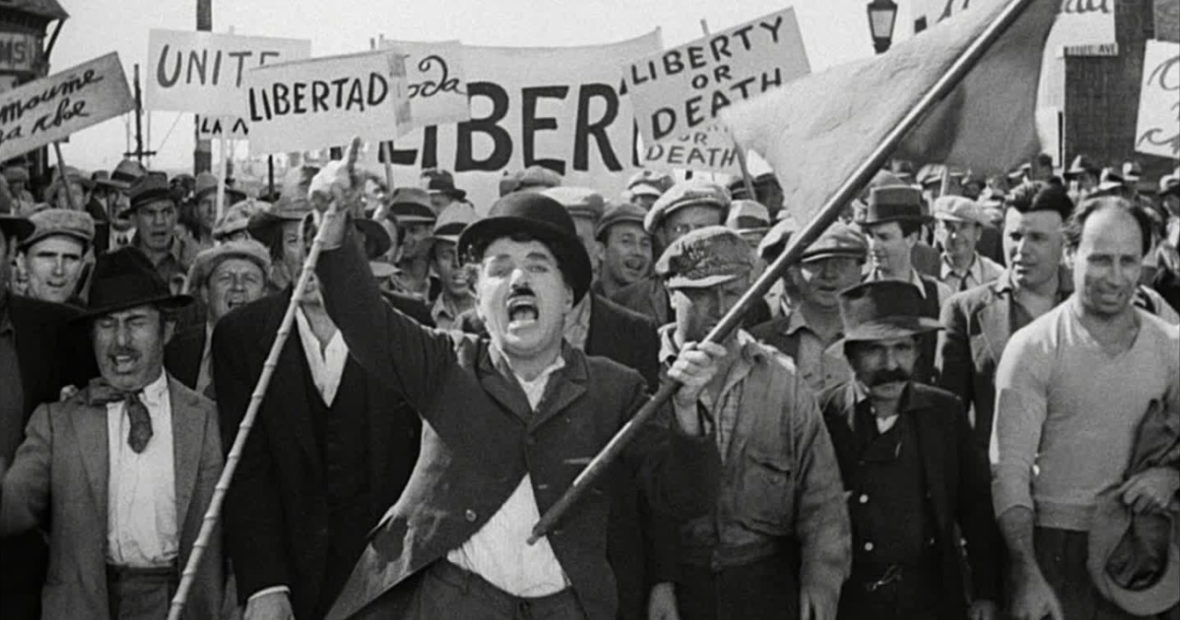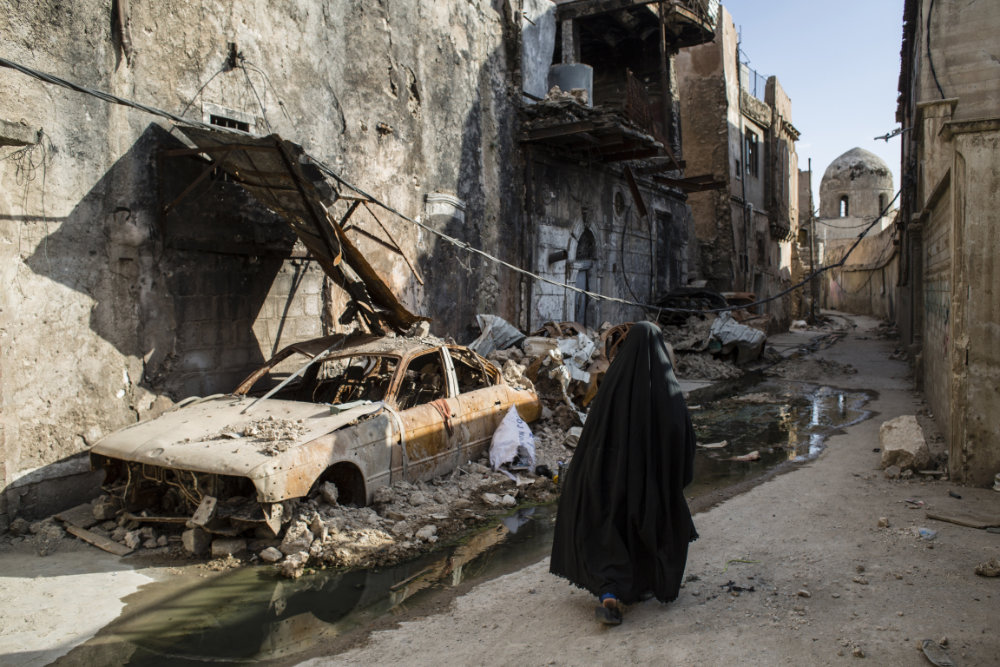In recent humanitarian meetings, I have had the strange feeling that I am witnessing an unlikely meeting of two great minds. On one side is Henry Dunant, the compassionate 1860s Swiss internationalist who worked formally with States using international law, a neutral organization and a new flag to protect people suffering in war. On the other is Paolo Freire, the radical 1960s Brazilian Marxist educator who redesigned grassroots popular education to enable poor people to develop political consciousness of their conditions, take power over their lives and change the politics in which they live.
Listening to humanitarians earnestly talk about involving, including and empowering people, I wonder if the ideological meeting of these two great men with beards would end in a punch-up or a warm embrace.
Many Dunantist humanitarians today are sounding like Freirean activists. We can be glad if this commitment to recognize suffering people as the “experts on their own situation” marks a real change from an imposed and colonial style of humanitarian aid. But, while the rhetoric of people power is easy to speak, it can be hard to bring about. Freire’s ideas, which have been so influential in liberation theology, ANC activism in South Africa and community development across the globe in the last 50 years, involve a different mindset and practice to conventional humanitarian thinking and action.
As the humanitarian sector tries to increase people power in new modes of participatory programming, localization and “accountability to affected people” (AAP), it is perhaps wise to look at the experience of some of Freire’s intellectual heirs working on poverty reduction and development. Many people in these parallel professions have been committed to a people-centred approach for decades and have some useful lessons for humanitarians, who are late movers on empowerment.
But, first, it is only right to look at why humanitarian organizations should be people-centred before then thinking about how they might actually achieve this in practice.
Sharing power in humanitarian action
Humanitarian action is a profoundly social practice that seeks to understand people’s conditions and needs, then work with them as individuals, groups, organizations, authorities and whole populations to achieve improvements in people’s personal lives and their collective experience.
It is right, therefore, that humanitarian action should be deeply people-centred. Good humanitarian action is a social encounter between two forms of agency: the human agency of those affected and the humanitarian agency of those trying to help them. Together, they must share a diagnosis of the situation and generate appropriate solutions which respect people’s reality, not only their humanity.
Diagnosis, from Greek, means to form knowledge (gnosis) between (dia) people. It is ethically insufficient if a humanitarian organization acts without working diagnostically with people on problems and solutions. We know this from our own lives. It is infuriating when people do not take us seriously, and simply guess what is wrong with us or tell us what is best for us without listening to us and thinking through solutions with us. The same is true in the humanitarian encounter.
In humanitarian grammar, the preposition “with” must be our moral guide. We should always prefer a practice that does things “with people,” and avoid a practice that does things “to people,” decides “for people” or acts “on people.” The great strap line from the global disability movement (via sixteenth century Polish constitutionalism) is evidently right: “nothing about us without us.” Wherever possible, people should be the subjects of humanitarian action and not just the objects of its aid.
Anyone who has really tried to work like this and “put people at the centre” in humanitarian work has probably discovered two big things. The first is that engaging and leveraging people power is not as simple as it sounds. It is typically difficult to organize and often unpredictable when people express preferences that do not fit with current humanitarian orthodoxy, like saying that education is more important to them than food aid. The second is that, when successful, people-powered change is often sustainable change. When positive social movements arise and organize effectively around people’s felt needs and agency, the result is often lasting change.
In short, promoting people power is hard but essential because it is good in and of itself and good for humanitarian results.
So, what does development say about how we should we do it?
People’s participation in development
Community development workers, the World Bank and governments have all experimented for decades with the introduction of people power into aid-based programming.
Much of this has been influenced by the powerful and accessible work of Robert Chambers, the “British Freire,” who led a participatory revolution in western aid practice from the 1980s onwards with his practice of participatory rural appraisal (PRA).[1] This move had an urban counterpart practice in the community action planning (CAP) of Colin Ward, John Turner, Jane Jacobs and Nabeel Hamdi.[2] The World Bank’s Michael Cernea and Caroline Moser – who introduced anthropology to the Bank – also worked hard to “put people first” in the 1990s.[3] Their work culminated in the World Bank’s Participation Sourcebook in 1996. Around the same time, UNHCR and Canada introduced the principle of people orientated planning (POP).
Welfare policy in mature democracies followed a parallel path. The “enrollment of ordinary people” has become a key principle in welfare programs and in school and healthcare governance, always with the same intention to make people active agents rather than passive recipients of government projects. Here, too, local people and local organizations are valorized as experts of their own condition, or “inperts” as Charles Abrams nicely called them. They bring common sense to the table, along with a “lived experience of government polices” and are seen – or imagined – as “the antidote to the failings of technocratic social administration.” [4]
People power in this development tradition is expected to produce three main gains. First, a design gain, as people design better programs because they understand their lives better than bureaucrats. Secondly, a cost gain, because local labor is cheaper and their better programs will reduce expensive development mistakes. Thirdly, a legitimacy gain, because these projects are co-generated by people and government, and not simply imposed by the latter.
Six lessons from development
There are many important lessons about enabling people power from development and welfare, which may usefully guide and resonate with humanitarian workers who are doing their best to be people-centred today. Here are six of them.
Community is not as happy as it sounds. Much early community development work sentimentalized “community” as a single and united group of people with shared values and interests which could easily make inspired decisions for the common good. The first thing that good participatory work reveals is, of course, the different interests, values, conflicts, exclusion and bias within communities themselves. Today’s intersectional analysis bring even sharper focus to this reality. Participatory programming is typically conflict resolution first. I remember losing my innocence about community when reading a deft 1983 ethnography of a Bangladeshi village called A Quiet Violence.[5] This showed how a place which looked so pretty was actually pretty awful.
People can have a limited vision. People live in particular places and often lack a broader view of needs and resources. Their wisdom often has a bounded rationality and geography. For example, people living in a river delta may not understand the lives and needs of people upstream, and vice versa. This means local participatory planning should always be plugged into district, regional and national planning too if it is to avoid the “little green islands” problem caused by highly localized development work which focuses intensively on particular local communities, demographic subsets and designated areas to the detriment of other people and places around them.
People-powered development is emergent, not planned. Taking a people-centred approach makes method and outcomes unpredictable. Progress takes place gradually, incrementally and tangentially, often from unexpected discoveries of some kind. This makes people-centred work an enabling art which hands over power and design to people who may think very differently from institutions. And emergence takes time. It does not follow straight lines but frequently changes direction as it seeks out success through trial and error, deviation, peer pressure and compromise.
People-based development is struggle. Community development is political, which naturally flashes an amber light at humanitarian organizations aiming to be neutral and impartial. People-led action typically involves people finding a new voice and asking for change that is sometimes accommodated and sometimes resisted by neighbors and authorities. New people power is often resented and resisted by authorities who prefer to control the way people “participate” in society and insist on controlling policymaking and resources directly. This makes the predominant experience of change-making one of struggle, and not a feeling of easy and orderly progress. The experience of agencies enabling such change is one of accompaniment rather than control.
People power takes a lot of time, effort and money. Being people-centred is a process, not an input. Real participation takes time and hard work by all parties. Participation can be very demanding and distracts people from their day jobs or their struggle for survival. The constant process of community engagement – and the ability of articulate elites to capture participatory processes, fake community consent and misdirect resources – has led critics to talk about “the tyranny of participation” and the debilitating effect it can have on people.[6]
Allocation dilemmas persist. When people power works, it does not resolve the tension between individual needs and collective needs which haunts humanitarian action as well as development. Community designed programs still have dilemmas about how much of a limited pot of money is spent directly on a caseload of needy individuals and how much is spent on wider public goods. These decisions may be more democratically and transparently made but they may still be painfully or angrily felt and form new grievances.
Supporting people’s power to survive
A policy to be people-centred demands real change in a humanitarian mindset, which can be deeply entrenched in a mental and moral gaze that sees humanitarian workers as active, in charge and masters of “the field.”
Instead, people power means that delivering becomes enabling, implementing becomes accompanying and there is no field, but only people’s homes, families, jobs, health, safety, education, suffering, agency and their protection under domestic and international law. Their world, not our field.
So, what can help us make this shift?
The most comprehensive guidance for humanitarian workers on people-centred programming is probably ALNAP’s 2009 handbook by Francois Grunewald and colleagues at URD. This is highly conscious of the above lessons and many more and gives good practical advice to those wanting to put people at the centre of humanitarian action. Many Sphere standards do the same and the ICRC has produced its own framework on accountability to affected populations.
First, we need to let people into our arcane world of objective setting, program design, planning, monitoring and evaluation. We need to open up by listening, involving and responding to people, and learning from them. This means listening better to affected people who are already inside our organizations, as well as leaving our institutional world more often to work better with people and groups outside it. Listening and including, we should then expect to do things differently. Our ready-made relief packages and humanitarian set-pieces may have to be dismantled as we work with people on a range of new asks.
Secondly, we need to think more consciously about power. Participation and localization are both about working with people to increase their power over resources and decisions that affect their survival and resilience. It is important, therefore, that humanitarian workers have a model of power to guide them as they work on the transfer of power in inevitably imperfect conditions.
I still find Lise Veneklasen and Valerie Miller’s model of power the easiest to work with and remember under pressure. Their model talks simply of four main kinds of power: power over people held by others and ourselves, or that which others have over us; power to act, which we each have; power with, which we have by joining with others and increasing power; and finally, of course, power within, which is the inner sense of dignity and strength we each have inside us that is the main source of our identity, resilience and purpose.
To be people-centred, we humanitarian workers must be aware of these four types of power in and around people suffering from war and disaster, and then work hard to support people’s power positively by what we do, say and bring. We must work with them to increase their power to do things, their power over things and their power with others and within themselves.
Listening to people is essential to this power analysis and is the primary skill in all people-centred work.[7] Our listening and understanding must then play into a genuine desire to use our humanitarian power to support people’s own power. This is what Chambers calls the “power to empower” and it often means giving power away and building power that is greater than our own.
Thirdly, we must give back some of our power to represent people’s experience of suffering and surviving. I have spent many privileged hours, dressed in my suit, trying to represent people in various diplomatic settings around the world during my five fascinating years with the ICRC. But why me? We must get better at bringing people to the table who speak for themselves. When we have managed this at the ICRC with families of missing people, leaders of local organizations or former fighters of various kinds, it has genuinely changed the conversation for the better.
Finally, we must be ready to be challenged, disrupted or replaced by new forms of power that emerge from our being people-centred. Whenever we work with power, we must remember Michel Foucault, and also the laws of physics. Foucault and physics both observe that the emergence of power always creates a reaction in the form of new dispersed forms of power or a firmly resisting power of some kind.
We should expect this when we increase people’s power in humanitarian action too, and never be sure of what reactions it will produce. We may seed organizations that take over from us, which are good for the world but bad for our pensions. We may enable power which ultimately disagrees with us, with our values or with the authorities around them.
Putting people at the centre, we may deliberately or inadvertently be part of creating real change. This will change us too. If all goes well, this will make humanitarian action better and, far above us, Dunant and Freire will embrace one another.
Footnotes
[1] See Robert Chambers two main texts: Rural Development: Putting the Last First, 1983, and Whose Reality Counts? Putting the First Last, 1999.
[2] For a book which draws on all their perspectives and is novel in itself, see Nabeel Hamdi, The Placemakers Guide to Building Community, 2010.
[3] Michael Cernea, Putting People First, 1992.
[4] John Clarke, In Search of Ordinary People: The Problematic Politics of Popular Participation, in Community, Culture and Critique, (6) 2013 pp208-226.
[5] Betsy Hartmann and James K. Boyce, A Quiet Violence: View From A Bangladesh Village, 1983, Zed Books, London.
[6] For significant critiques of participation as development practice see Bill Cooke and Uma Kothari (eds), Participation: The New Tyranny?, Zed Books London 2001, and Samuel Hickey and Giles Mohan (eds) Participation: From Tyranny to Transformation, Zed Books, London 2004.
[7] Hugo Slim and Paul Thompson, Listening for a Change: Oral Testimony and Development, Panos, London, 1993.
Other blog posts by this author
- Reflections of a humanitarian bureaucrat, January 9, 2020
- Trust me – I’m a Humanitarian, October 24, 2019
- The Power of Humanity: On being human now and in the future, July 30, 2019
- Masculinity and War–let’s talk about it, March 15, 2018
- Impartiality and Intersectionality, January 16, 2018
- Habitat III: The smartest city is a safe city, October 24, 2016
- Remember the millions of people living in urban violence, July 4, 2016






Bravo!
Excellent article once more to congratulate Hugo!
I know some more eloquent people joke about our slow Swiss dialects but we have one advantage to say most often: “Mitenand” (together): “Grüezi mitenand!”, “en Guete mitenand” etc It is like a reminder of the old IndoGerman roots still (!) preserved in Ancient Greek of the modus Dualis: a separate form of linguistic expressing meaning “togetherness, interconnectedness”: That’s what we need more than ever: that feeling that we all are in some ways bound together (without ties)
How can we find a way to keep being informed by Hugo Slim’s thoughts in spite of his going (having gone already?) to Oxford?
Kindest regards & best wishes
Jürg
Hi Jurg and thanks for reading! We are all wondering the same thing, but rest assured that as the blog’s editor I’ll make sure we still hear from Hugo after he’s moved on to his next adventure!
I appreciate you letting me know that humanitarian action involves seeking an understanding of people’s conditions and needs, and achieving improvements in their lives by working with individuals, groups, or organizations that can offer assistance. I imagine if you work as a humanitarian for a non-profit organization, it’s important to make sure that the authorities you work with can be trusted and will assure that the donations will be handed to the right people. I’ll have to look for a social inequality organization one of these days so I can also contribute with a donation. https://justliving.org/products/